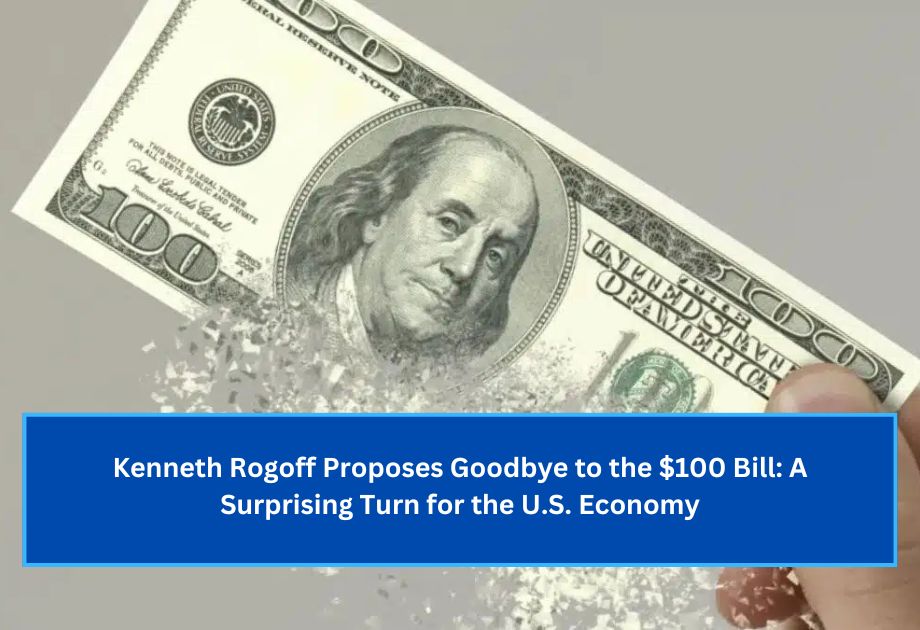Kenneth Rogoff, a well-known economist and chess Grandmaster, has stirred up a lot of discussions with his bold suggestion to abolish the $100 bill. According to him, this would help reduce the use of cash in illegal activities and make the economy more efficient. Rogoff argues that since cash is no longer as commonly used for daily transactions, there may not be a strong need for high-value bills like the $100 note. While many people still value cash for its symbolic and practical uses, Rogoff believes it might be time to move on from this high-denomination bill.
Why Does Rogoff Want to End the $100 Bill?
Kenneth Rogoff’s argument centers around the role of cash in illegal activities. He points out that a large number of U.S. $100 bills circulate outside of the United States, with a surprising number of them held by Americans themselves. The U.S. Treasury reports that, on average, each American holds around 55 $100 bills. Rogoff believes that by removing these high-value bills, it would become harder for people to evade economic policies and laws, especially those involved in illegal financial activities.
Rogoff also highlights the problem of counterfeiters creating high-quality fake $100 bills, like the “superdollars” produced in North Korea. These counterfeit bills look almost identical to real $100 bills and are used in various illegal markets. According to Rogoff, eliminating the $100 bill could help central banks control the economy more effectively and reduce the spread of illegal activities.
The Psychological Effect of the $100 Bill
Rogoff’s proposal brings up an interesting point about how people perceive money. One study, conducted by Helen Colby at Indiana University, showed that people are less likely to spend a $100 bill than five $20 bills. This is known as the “denomination effect.” Psychologically, larger bills like $100 feel more “valuable,” so people hesitate to spend them, even if the total amount is the same.
Colby explains that when you use a credit card, the act of spending doesn’t feel as real because you don’t physically hand over money. However, when you give away a larger bill, it feels like you are losing something valuable. This phenomenon helps explain why people are often reluctant to spend large denominations, even if it’s the same amount of money.
The Lifespan of the $100 Bill
Interestingly, the $100 bill stays in circulation for over 10 years, according to the Federal Reserve, while smaller bills like the $1 and $5 notes circulate for less than two years. This suggests that $100 bills are used less frequently for everyday transactions, but they remain in circulation for a long time, which raises the question: Should the U.S. introduce a higher denomination, like a $500 bill?
While this idea might seem outdated, it could actually be useful in an economy where larger cash transactions are becoming more common. Although the suggestion of a $500 bill is not widely popular, it opens the discussion about how the U.S. currency system could evolve in the future.
Kenneth Rogoff’s Proposal at a Glance
| Date | Proposal | Reason |
|---|---|---|
| November 2024 | Abolish the $100 bill | Reduce illegal activities, enhance monetary policy efficiency |
| Ongoing | Superdollars (counterfeit $100 bills) | Counterfeiters like North Korea produce convincing fake $100 bills |
| No Set Date | Consider introducing a $500 bill | Potential for larger transactions in today’s economy |
FAQ’s
Why does Kenneth Rogoff want to abolish the $100 bill?
Rogoff believes that eliminating the $100 bill will reduce its use in illegal activities and improve monetary policy.
What is the “denomination effect”?
The “denomination effect” refers to how people are less likely to spend larger bills, like $100, because they feel more valuable.
Should the U.S. introduce a $500 bill?
While it may sound outdated, introducing a $500 bill could help meet the needs of a modern economy that requires larger cash transactions.

